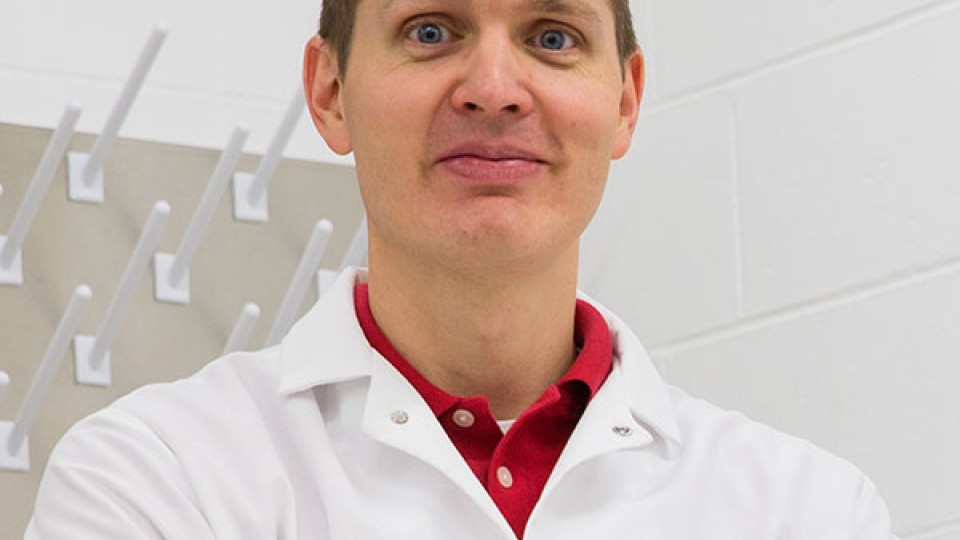· 2 min read
Terry, NSRI team refine oxygen-delivery treatment

University of Nebraska-Lincoln engineer Benjamin Terry and his colleagues have earned a $1.3 million grant to advance technology that administers life-saving oxygen to patients suffering from traumatic injury.
Headed by the National Strategic Research Institute at the University of Nebraska, the project will refine a technique that uses tiny bubbles to mimic the alveoli of the human lung by releasing oxygen while removing carbon dioxide.
Envisioned as emergency treatment for those whose lungs have stopped functioning after severe injury, microbubble oxygenation could raise blood-oxygen levels long enough to help patients survive transport from remote environments, the researchers said.
“Our system transforms the abdomen into a third lung, so to speak,” said Terry, assistant professor of mechanical and materials engineering. “Through a method of pumping and delivering oxygen microbubbles into the abdomen while removing dangerous carbon dioxide, the process delivers life-sustaining oxygen to the body’s core, which is then circulated to the brain and other vital organs.”
Terry will lead the design and development of a device that can deliver the oxygenated microbubbles to patients whose lungs are damaged beyond the use of traditional ventilation. This could prove especially important in scenarios involving weapons of mass destruction, Terry said.
“The current en-route care system of transporting patients has high survival rates, but unique scenarios could severely stress the system in the event of mass casualties,” he said. “In the event of WMD attack, there is a high probability that the current transportation system would be overwhelmed.”
The University of Colorado Boulder’s Mark Borden, who pioneered the approach, will establish a process for manufacturing the microbubbles on a large scale. Meanwhile, a team at the University of Nebraska Medical Center will construct injury models suitable for testing Terry’s delivery system.
The team will receive funding from the Office of the Air Force Surgeon General.







